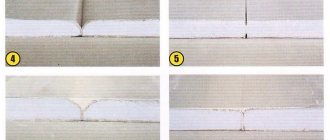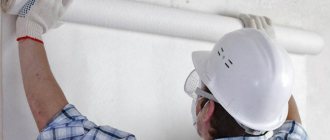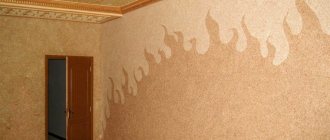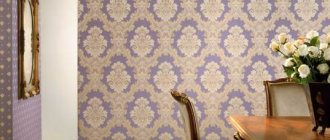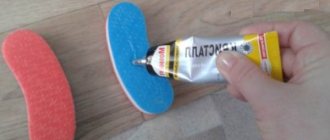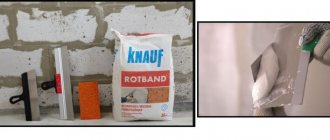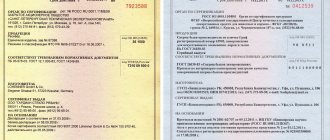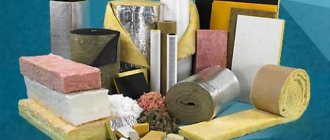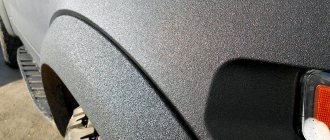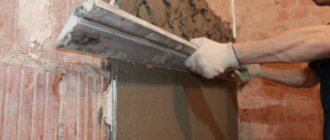There is an alternative to plasterboard sheets used as a material to create a flat surface. These are dry plaster compositions, the basis of which is a gypsum mixture. The most widely used putty in construction is the Volma brand putty.
Its main component is natural gypsum filler, which has high viscosity properties. It goes on sale in the form of a dry composition and is intended for puttying work performed manually. The composition also contains other components - mineral and chemical additives. Their properties allow them to retain moisture, increase reliability and adhesion. This makes the working time with the plastering material optimal. Among other things, Volma putty reduces the work process, because its ability to dry quickly is irreplaceable and effective in construction and decoration.
Volma brand plaster
Volma's strengths:
- The surface is given a glossy plane; no finishing is required;
- The mixture is airy and plastic;
- No shrinkage is observed;
- The material is environmentally friendly;
- The ability to thermoregulate;
- The bases are leveled in one layer up to 6 cm thick.
produces simultaneously several types of putty mixtures.
"Aquastandard"
The fiber-reinforced composition is based on Portland cement. To enrich it, mineral and polymer additives are used. This putty is moisture-resistant and non-shrinking.
Technical indicators:
- The color of the mixture is gray;
- Temperature conditions for performing work – +5 – +30 ◦С;
- The amount of liquid consumed per 1 kg is 0.3 l, ±0.05;
- The thickness of the applied layer is 0.1 – 0.3 cm;
- Maximum layer thickness – 0.8 cm;
- The diluted solution is suitable for approximately 2 hours;
- Dries completely – 24 – 36 hours;
- Operates at temperatures – – 50 – + 70◦C;
- When applying a layer 0.1 cm thick, 1500 – 1800 g is consumed.
“Aquastandard” is used to level the base on which it is planned to apply decorative coatings - plaster, paint. The maximum permissible layer is 3 mm. For these purposes, other compositions are used: “Standard”, “Base”
Volma "Aquastandard"
It is used to seal shells, cracks, potholes and depressions with a layer of up to 0.6 cm. A larger layer (up to 8 mm) is allowed, if necessary, to seal a joint or seam formed by concrete slabs.
Putty is applied outside (plinths, facades) and inside buildings. Moreover, it can be used in conditions of high humidity and low temperatures.
A layer is applied to different concrete surfaces: gas concrete, foam concrete, expanded clay concrete, slag concrete, and bases treated with a special composition, such as cement-lime, cement-sand.
Not recommended for application on gypsum-containing substrates.
How to apply correctly
Below we describe the main stages of applying Volma putty to the surface to be finished.
Preparing the base
It is necessary to clean the base, wall or ceiling on which you plan to apply Volma putty. It is necessary to remove oil and grease stains, wipe off dust, and get rid of peelings. The surface itself must remain durable
Before you start applying putty, you should treat the surface with Volma primer, and then dry this coating. If there are defects in the wall whose depth exceeds six millimeters, then plaster from the same manufacturer is used.
Work with putty can be carried out in conditions where the temperature in the given space is not lower than +5°C and not higher than +30°C
Preparing the mixture
Before preparing Volma putty, you need to wash and dry the container, and also take clean tools.
- You need to take clean water that contains no visible impurities;
- Next, the dry mixture is poured into this liquid step by step, in the end the proportion should be as follows: from 0.28 to 0.33 liters of water per kilogram of material;
- After this, the composition is kneaded using a drill with an attachment or a construction mixer; the tool must be adjusted to a speed of 400 to 800 so that the product comes out with a uniform consistency. Periodically, the composition must be allowed to stand, after which it is necessary to start mixing again.
Once the solution is ready, it should be used within two hours.
Application
Volma putty is applied to the surface manually using an iron spatula. It is necessary to obtain an even layer, the thickness of which should be in the range of one to three millimeters. After the treated surface has dried, you need to use a grinding tool to level it, carefully cutting off all remaining protrusions.
If necessary, the material can be applied in several layers. In this case, after treating with one layer, you need to wait until it is completely dry and then apply a primer and also wait for it to dry, and then treat the surface with an additional layer of solution.
If the façade of a building is finished using this putty, then it is necessary that neither sunlight nor precipitation fall on the surface during the work. After treatment, it is necessary to protect this coating from relevant influences for three days after complete completion of the work.
Nuances of operation
Before applying Aquastandard, carefully prepare the base. Initially, the coating, elements susceptible to shedding, and contamination (oil, bitumen, etc.) are removed. Otherwise they will prevent adhesion.
Pre-treatment of the base with one or two layers of primer of the same brand enhances the strength of fixation.
The dry composition is diluted with water in a ratio of 1 kg: 0.3 ± 0.05 l. To ensure homogeneity of the mass, the mixture is stirred for three minutes. Then it is allowed to “rest” for about five minutes, after which it is mixed again. To do this, use a special mixer or drill with an attachment with a speed of at least 400 rpm. The solution remains usable for approximately two hours.
The ratio of dry matter and water is maintained. Do not use other components to dilute the mixture instead of water.
Primer mixtures
The main nuances of performing plastering work:
- The solution is applied with a metal spatula onto a previously prepared base. The layer is 0.1 - 0.3 cm. Defects formed during application are eliminated with abrasive materials, but after the coating has completely dried.
- Re-coating is performed after the first has hardened and primed;
- When finishing the facades, the freshly laid coating is protected from precipitation, cooling, and drying out for three days. Work should not be started in case of strong wind or rain.
"Finish"
The dry composition is based on a gypsum binder component with particles with a diameter of 0.2 mm. The composition is enriched with modified additives and mineral fillers. This putty has improved adhesion and is resistant to cracking.
Technical indicators:
- Acceptable temperature conditions for performing work are +5 – +30 ◦C;
- The amount of liquid consumed per 1 kg is 0.5 l, ±0.03;
- Complete drying at 20 ◦C – 5 – 7 hours;
- The layer is applied with a thickness of 0.02 – 0.3 cm;
- Maximum layer thickness – 0.5 cm;
- The diluted solution is suitable for 60 minutes;
- Applying a layer with a thickness of 0.1 cm requires - 900 - 1000 g.
The name itself speaks about its purpose - finishing (final) finishing. The treated base is covered with paint, wallpapered and decorated.
Apply a layer on gypsum, pre-putty concrete surfaces, gypsum plasterboard, gypsum sheets, gypsum slabs with a tongue-and-groove surface.
Finishing plaster of the Volma trademark is applied to a dried, reliable, prepared base or seam without contamination and paint coatings. When treating highly absorbent substrates, a primer is recommended.
The dry composition is diluted with water +5 – + 20 ◦C in the ratio of 1 kg of mixture: 0.5 l of water (±0.03 l). To obtain a homogeneous mass, the mixture is stirred for three minutes. Then it is allowed to “rest” for three minutes, after which it is mixed again. To do this, use a special mixer or drill with a similar attachment. The solution remains usable for approximately 60 minutes.
Finishing
The solution is applied to the base with a metal spatula. The layer is 0.02 - 0.3 cm. After 5 - 7 hours, complete drying occurs, after which it is sanded with a fine-grained abrasive mesh. To prevent the formation of defects after applying the next layer, the first one is treated with a primer.
The final preparation of the base is also carried out with a new, improved composition of the Volma trademark “Polymix” or “Polifin”.
Popular types of Volma putty
All Volma products are manufactured in accordance with the regulations TU 20.30.22-050-92992699-17 “Finish putty, ready for use”, as well as in accordance with the Unified Sanitary, Epidemiological and Hygienic Requirements. Variations differ not only in structure, but also in the level of adhesion, composition, resistance to mechanical and climatic influences. Users identified the best building materials from the entire range of products offered:
Volma-Cream
The material is used in dry and well-heated rooms. The consistency is ready for use immediately after purchase. It is well applied to plasterboard partitions, pre-plastered concrete, and tongue-and-groove slabs. This is an excellent option for preparing walls and ceilings for painting, wallpaper or decorative plaster.
"Volma-Cream"
Main characteristics:
| Consumption per 1 mm | 1.6 kg/m2 |
| Thickness of one layer, mm | 0-2 |
| Expiration date, months | 18 |
| Base temperature | From +10 to +30ºС |
| Period until complete drying | 1 day |
| Packaging, kg | 4 and 16 |
The cost of packaging with a minimum weight is 800 rubles.
Volma-Shov
This is a dry composition that is based on natural gypsum components, mineral, and chemical impurities. This composition provides a high degree of adhesion, water-repellent ability, and a long service life.
Volma-Shov
Options:
| Consumption per 1 m2 of seams | 0.25 kg |
| Consumption of dry mixture for continuous coating with a layer of Volma 1 mm | 0.8-0.9 kg |
| Water consumption for dilution per 1 kg | 0.6-0.68 l |
| Service life after dilution | 40 min. |
| Time for complete drying | Day |
| Compressive Strength | More than 4 MPa |
| Clutch | More than 0.3 MPa |
| Base temperature | from +5°С to +30°С |
This series of Volma building materials is used for sealing seams between plasterboard bases, correcting gypsum plasterboard defects, eliminating cracks, potholes, and leveling surfaces with a difference in pore level of 5 mm. Volma-Shov price – 275 rubles. per package weighing 25 kg.
Volma-Satin
Volma finishing gypsum putty is used for finishing the surfaces of ceilings and walls, as well as decorative interior elements indoors. The room must have an optimal humidity level in order to obtain a high-quality surface for painting, wallpapering and cladding with other types of finishing products.
Volma-Satin
Volma-Satin is applied to a gypsum base with preliminary plastering, the surface of tongue-and-groove structures with level differences of no more than 3 mm.
Parameters and price:
| Water consumption per kg | 0.55-0.65 l |
| Period of complete drying at a temperature of 20ºС | 5-7 hours |
| Service life of the diluted mixture | 100 min. |
| Clutch | More than 0.3 MPa |
| Thickness | 5 mm |
| Composition consumption for a layer of 1 mm | 0.9-1 kg. |
| Price for 20 kg | 230 rub. |
Volma-Standard
The material is used for basic leveling of walls and ceilings indoors. Used in combination with concrete, gypsum, gas, and foam concrete surfaces. Requires preliminary dilution with water in accordance with the manufacturer's recommendations, which are indicated on the packaging. When sealed, the building material can retain its properties for up to 1 year.
Volma-Standard
Parameters and cost:
| Water consumption per kg of mixture | 0.55-0.55 l |
| Period of complete drying at a temperature of 20ºС | day |
| Service life of the diluted mixture | 120 min. |
| Clutch | More than 0.3 MPa |
| Thickness | 1-3 mm |
| Composition consumption for a layer of 1 mm | 0.8-1 kg. |
| Price Volma-Standard 25 kg | 360 rub. |
Volma-Aquastandard
This is a dry facade putty based on white Portland cement with mineral and polymer additives. It is characterized by the absence of shrinkage, moisture resistance and the presence of reinforced fibers.
Volma-Aquastandard
Cement putty has the following characteristics:
| Color | Beige |
| Filler fraction, mm | 0,63 |
| Operating temperature, ºС | From +5 to +30 |
| Layer thickness, mm | 1-10 |
| Operational period after preparation | More than 3 hours |
| Complete drying period | 3 days |
| Price for 22 kg | 240 rub. |
Price per bag 22 kg 240 rub.
In addition to the fact that the material is successfully used for external work, it is also used to eliminate large depressions and cracks up to 8 mm in size.
“Shov” mixture
The dry mortar is based on a gypsum binder of natural origin. The composition is enriched with improved fillers, chemical and mineral. This putty with increased adhesion is able to retain water. It provides ideal timing for work.
Technical indicators:
- Temperature conditions for performing work – +5 – +30 ◦С;
- The amount of liquid consumed per 1 kg is 0.6 l, ±0.05;
- Complete drying – 24 hours;
- The layer is applied with a thickness of 0.02 – 0.3 cm;
- The diluted solution is suitable for 40 minutes;
- When applying a layer 0.1 cm thick, 800 – 900 g are consumed;
- When sealing seams with an area of 1 m2, 250 g are spent.
"Seam" is used for:
- Sealing seams formed by gypsum fiber boards and gypsum boards;
- Elimination of defects in the form of potholes, cracks;
- Giving a surface with five-millimeter irregularities a glossy plane.
“Seam” is applied to blocks, gypsum slabs, foam concrete, aerated concrete, plasters with a cement and gypsum base, brick, plasterboard, concrete, gypsum fiber board.
The base is prepared, cleaned and dried. All metal elements are treated to prevent corrosion. When treating highly absorbent substrates, a primer is recommended.
Putty for sealing seams
The dry composition is diluted with water in the ratio of 1 kg: 0.6 ± 0.05 l. To ensure homogeneity of the mass, the mixture is stirred. Then it is allowed to “rest” for about three minutes, after which it is mixed again. If the consistency of the solution is insufficient, then additional water or plaster can be used. The composition remains usable for approximately 40 minutes.
- Sealing seams with thinned edges. Before you begin, you should make sure that the gypsum board sheets are securely fixed and tighten the screws protruding above the surface. Each seam is cleaned and primed. Reinforcing tape is applied to the joints. The putty solution, the layer of which exceeds the width of the tape pressed into it, is applied with a spatula. After complete hardening, a second layer is applied to the entire joint using a spatula with a wider blade. To form a single plane, the seams are sanded with a special float, on which a sanding mesh is placed. The screws recessed into the gypsum board are covered with plaster and sanded.
- Sealing seams with end and cut edges. These types of edges undergo a preparation stage for subsequent processing of seams even before the installation of gypsum board. 2/3 of the total thickness is removed from them at an angle of 22.5◦. After installing the gypsum boards, the seam is processed as described above.
- Puttying the entire plane. The first layer is applied with a wide blade spatula and carefully leveled. After complete drying, the applied layer is covered with a thinner layer for better leveling. The resulting defects are removed with a grinding tool.
Before painting the surface, finishing plaster is applied followed by treatment with a primer.
Volma has established itself as a quality manufacturer
Technology of applying decorative plaster wave (all methods)
With this mixture you can create not only waves, but also various other patterns, for example, a world map pattern of decorative plaster.
There are many technologies for applying wave decorative plaster with your own hands; let’s look at the most popular and simplest methods.
The room temperature should not exceed 35+ and not lower than 5.
Be prepared for the primer to take 1-2 days to dry. It is better to make the mixture using a construction mixer; it is good for mixing until smooth.
Creating a sea wave with a trowel
- To begin, apply a thin first layer, while slightly leveling it with a trowel. In order for the pattern to turn out beautiful and uniform, you do not need to apply the mixture to the entire wall.
- Next, use the same trowel to apply the second layer - this will be our future drawing. Use a trowel with a wavy edge to draw wavy lines.
- In order for the drawing to look seamless without various jerks, we do it slowly, without immediately capturing large areas.
- Once the work is completed, we finish or correct the incorrect parts of the wall.
- Leave to dry for about 2-3 days.
Creating wave crests with a brush
Using a trowel, apply plaster, filling all uneven areas. We take a regular wide brush and, using wave-like movements of the hand, create small wave crests.
Decoration options with a notched trowel
You can achieve different textures with a notched trowel. For example, semicircles overlapping each other or circles of different sizes. It's easy to create wavy lines. The video shows several options for using such a spatula.
Professional opinions
People generally respond positively to putty. Consumers note high quality for a relatively small amount. The following video shows the quality of the work performed.
The packaging describes a detailed operating process, which helps during repairs. By following these recommendations, the final result is solid and attractive.
Manufacturers have indicated the ability to omit the puttying process. But builders who have tested the composition in practice note a slight graininess and advise not to neglect the finish. When working with the ceiling and wall slopes, a finely dispersed mixture is additionally applied.
Decorating artists also give positive descriptions of plaster. The homogeneity and softness of the mixture makes application simple and ensures quick drying and reliable fixation with the base.

